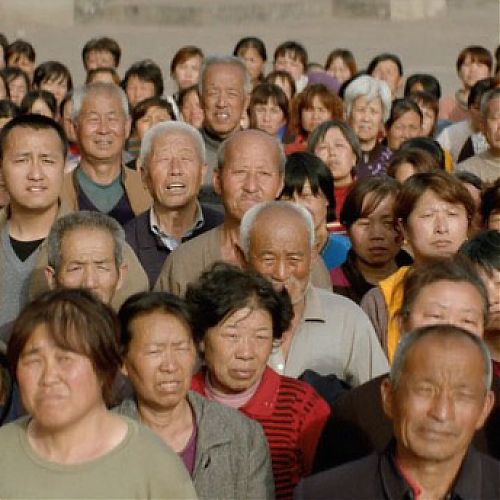Reading Enclosure and the Global Commons with Jia Zhangke’s A Touch of Sin (2013)
In Carolyn Lesjak’s chapter on Thomas Hardy, we are offered glimpses of the author’s “Facts” notebook, from which he draws to “represent … the profound transformations that mark the slow but violent process of enclosure,” the book’s central subject.1 In this essay, I reflect on how the Chinese filmmaker Jia Zhangke registers similar transformations in his film, A Touch of Sin(2013) — though against the backdrop of a far more rapid enclosure movement in China beginning in the 1990s. Much as Hardy draws from the Dorset County Chroniclefor his realist fiction, Jia draws from high profile news stories from the Chinese social media network Weibo for his neorealist film. The film weaves together four stories that build up to desperate acts of violent resistance: a village massacre over mining profits, serial killings by a disaffected armed robber, the stabbing death of a government official by a spa receptionist, the suicide of a factory worker. In engaging Lesjak’s arguments about British realism alongside a contemporary Chinese film, I hope to take up Lesjak’s gestures toward potentiating a “global commons,” as well as to unsettle some potential assumptions about globality.
According to Lesjak, British realism’s figurations of a persisting commons after Britain’s most heightened period of land enclosure offer imaginative resources for a present and future commons that extends outward to the whole world. Rerouting the commons primarily through character, Lesjak’s chapters uncover resistance to the capitalist logics of enclosure in dialectical relationships “between individuals in their social world [that are] mutually constitutive rather than oppositional.”2 In Dickens, collections of “eccentric” characters hold open the “subjunctive” possibility of a future commons based on a mutual reification that yet maintains distinctions; in Eliot, a material, economic indebtedness between characters provides the ground for a “commonwealth of all”; in Hardy, enclosural logic’s incomplete transformations of selves at the local scale figure relational, global selves to come.
Jia’s film(s) — and the situation of modern Chinese land enclosure in the last forty years — can offer something of a testing ground for Lesjak’s ambitious claim that British realism’s experimentations with character are up to the task of envisioning a commons for our global twenty first century. A Touch of Sin also figures the commons through character in similar ways, while subjecting its figurations to a more claustrophobic ethos haunted by the spectre of Maoist crowds. A collective project of social justice, mediated through the consciousness of the commons, can be strikingly mindless and psychotically violent. This, too, is registered in the moments that typical, suffering characters in the film snap suddenly into acts of violent protest, rendered only partially heroic through stylized choreographies and bloody scenes that allude to wuxia.3 Jia’s film, uncertain about the subjectivity of the commons, opens up an important space for thinking with as well as against more optimistic possibilities for global solidarity against enclosure’s capitalist logic. Below, I briefly discuss how the film’s Chinese context brings into view important limits of the global that we must responsibly engage, even as the film grapples with the undeniable realities of the presently “entwined crises of global capitalism and ecological catastrophe” (a view that Lesjak argues Hardy already registers in “the great web of human doings … from the White Sea to Cape Horn”).4
Lesjak’s book includes a clear account of British land enclosure’s submerged and slow violence, unfolding at least since the fifteenth century into a nineteenth century poised between “the memory of the literal commons” and “a quickly consolidating capitalist system premised on private rather than collective property relations.”5 British realism, Lesjak explains, is uniquely positioned to register the disappearance of land held in common, while yet remembering the concreteness of common ways of life. As such, Dickens, Eliot, and Hardy can figure future possibilities that draw from a past without falling prey to simple nostalgia. China in the new millennium is poised at a similar juncture. As is well known, after the Cultural Revolution, China in the 1980s began its stunningly fast (though uneven) transformation into a global economic superpower. Since the 1990s, China has been marked, too, by rapid land enclosure, urbanization, and rural village removal, resulting in migrant labor crises and inequality that, thanks to global flows of capital, are indubitably linked to the movement of workers across the global south. Focusing on China alone, however, Zhang Yulin estimates that between 1990-2013, approximately 10 million hectares were occupied or converted to state-owned land, while 130 million peasants have become landless, and villages reduced by about 35 percent.6 By way of comparison, more than three times the amount of land was enclosed in China within the span of 25 years than in Britain over the course of 400 years, and more than seven times the amount when compared to a 30 year peak of British enclosure in the early nineteenth century.7
What happens when enclosure is fast and “evental,” and not the slow violence of industrial capitalism’s longue durée? Can the genre of realism yet again register the various figurations of the commons that Lesjak traces, in such a context? Despite the film’s wuxiainspired stylizations, A Touch of Sinis a work of realism in ways that resonate Lesjak’s accounts of Dickens, Eliot, and Hardy, particularly in her emphasis on type and typicality (as the director himself puts it: “there is no metaphor in this film; there is only reality”).8 In addition to the film’s Hardy-esque transformations of local resistance into scenes that oscillate between the typical and the (individually) tragic, the dialectic that Lesjak assigns to Dickens’s “eccentric” commons — where the common derives from “the one asthe many” — also surfaces in A Touch of Sin’s visual patterning.9 For each of the main characters, for instance, shots cut from static frames of “the one” to the many (figures 1 & 2). Drawing on Dickens’s adaptation of Regency period “character books” that catalogue eccentric persons much like a museum collects curiosities, Lesjak argues that a dialectic of “the one as the many” contains a utopian gesture, for the common comes to life in pleasurable eccentricity.10 Likewise, A Touch of Sin’s characters come alive in relation to a protagonist group collected by the film’s approximations of a weakly imagined community. Zhou San, the disaffected robber and serial killer — on the move between provinces, and in between city and country — lightly weaves the lives of the other three characters together with his fleeting encounters. But there is no such pleasure or utopian possibility in such a collection. Rather, in these mutual constitutions of the individual and the social fabric, eccentricity derives from a shared potential for violence amid the common conditions of enclosure: Zhou San’s expressionless killings; Da Hai’s desperate rampage; Xiao Yu’s directed and precise stabbing, Xiao Hui’s resolute fall to his death. Here, violent acts are eccentrically particular, as they come into being through a collectively suffered fate wrought by the state’s alliance with neoliberal capital.
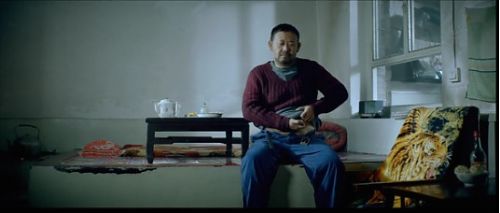
Figure 1a: Da Hai alone in a room injecting insulin.
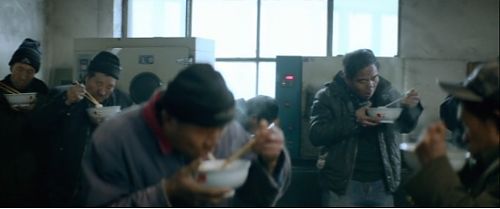
Figure 1b: Cuts to panning across Da Hai’s fellow mine workers on a lunch break.
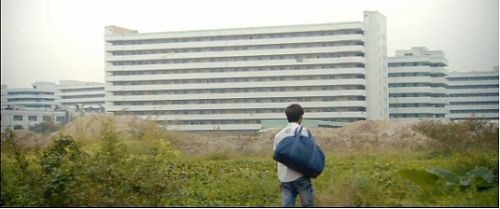
Figure 2a: Xiao Hui on his way to the factory seeking work.
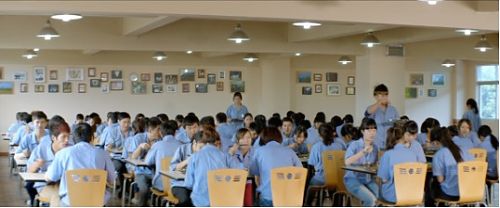
Figure 2b: Cuts to a panning shot of the workers in a cafeteria line that ends with this view of the collective whole.
Despite its clear critique of global capitalism, A Touch of Sin is in many ways a film that stays within the bounds of the nation, even as the characters are constrained by it. The filmstages subtle questions about a global commons and its potential limits, specifically in small rupturings of a mise-en-scène generally dominated by class contrasts internal to the nation. Early in the film, when Da Hai rides his motorcycle into his village, he is intercepted by a truck carrying delivery workers asking for directions. Amid this group of workers, dressed in shades of grey-blue that blend them with their truck and the snowy landscape, is a cartoonishly bright painting of the Virgin Mary and Child. In the backdrop, the shadowy presence of a statue of Chairman Mao with his signature salute stages a meaningless confrontation between Eastern and Western symbols of value — parodically leveled to simulacra through the globalization of capital. In another scene, Xiao Hui on the way to the factory (figure 2a) exchanges a brief, friendly greeting with three black men drinking beer and Coca-Cola. The moment offers a glimpse into China’s recent economic activities on the African continent (and a light juxtaposition with U.S. imperialism), but despite the friendly exchange, it is no gesture of global worker solidarity.
I read these moments of minimal globality as actively resisting a familiar liberal gesture that registers the grand complexities of global entanglement.11 In their briefness and intransitivity, these ruptures into the global feel like asides in a film that is definitively national in its scope, in ways that feel claustrophobic, as might be expected — yet also reluctant before a certain form of global inclusion. Against a critical liberalist subjectivity that privileges connection (whether Eliot’s realization of common “indebtedness” or Hardy’s “great web of human doings”) the film tightly shutters the Chinese commons between two nationally specific poles: wuxiaheroes defending the poor against dynastic corruption, and the spontaneous violence of Maoist mass movements. When the characters snap into violence, they are equal parts knights-errant liberating the dispossessed, and the Cultural Revolution’s mindless, leftist mob. Jia’s realism, on one hand, shares what Lesjak identifies as British realism’s wish to capture a figurative “unseen reality” of the commons, especially in A Touch of Sin’s toggling between fantasy and empiricist reality in order to do so.12 On the other hand, the film not only resists globality, but also forecloses relationality through an aesthetic of tragic eccentricity that seems to exhaust itself the moment that violence has been committed. The film’s historical drama, in other words, is not staged against the “opening” of the East to Western globality: rather, Western globality enters as a minor character in a longstanding and specifically Chinese story of class struggle.
This enclosure I am ascribing to the film’s resistantly globalist logic resonates most palpably in the final turn of the plot, where the receptionist Xiao Yu’s “escape” from her crime is to leave Hubei for a job with the Shengli Group in Shanxi, the same corporation that employed Da Hai (whose former head, Boss Jiao, he murdered). When Boss Jiao’s wife, now the head of the company, notices during the interview that she has heard of Xiao Yu, she discreetly asks if “the problem” has been resolved — to which Xiao Yu responds that it has. This is, strangely, neither a scene of hopeless bondage to capitalism, nor solidarity between women. It is transactional, but it is also built on trust (the new boss takes Xiao Yu’s word). A Touch of Sin’s taut resistance to “outside” understanding — whether in its minimal globality or non-emancipatory perspective on the commons — demurs from the kind of solidarity politics that characterizes what might be called the global, Marxist Left.
Thus, enclosural logics in the film operate both as oppressive containment and resistance to a particular kind of thinking that accrues (academic) “capital” in the West. Of course, A Touch of Sinis a film that has circulated precisely through the mechanisms of global capital, nominated for the prestigious Palm d’Or Award (while the film remains de facto censored in China). This is a good reminder of the dirty business of which we all are a part, a common indebtedness that Lesjak tags to Eliot — a lesson (that Dorothea finally learns) about the cost of things. Indeed, the film’s final shot — of a crowd gazing at an opera singer who asks of them, “do you understand your sin?” (figure 3) — suggests that we are all of us common in how we sin. The resonance of this story of the commons in the modern Chinese context, however, forecloses the “commonwealth outside” that Goodwin the inlayer from Daniel Derondaenvisions, suggesting that the afterlife of enclosure is enclosure all the way down — but also that openness may be a trap, and enclosure resistance.
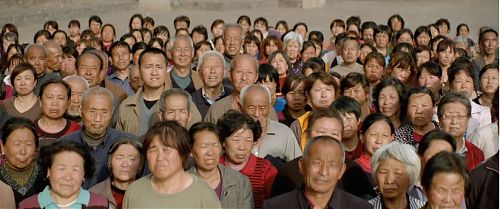
Figure 3:The final shot
- Carolyn Lesjak, The Afterlife of Enclosure: British Realism, Character, and the Commons(Stanford: Stanford University Press, 2021) 148.
- Lesjak, Afterlife 5.
- As Jia himself puts it in an interview, his characters are cán xiá, or “damaged knight-errants.” See Yanjie Wang, “Violence, Wuxia, Migrants: Jia Zhangke’s Cinematic Discontent in A Touch of Sin,” Journal of Chinese Cinemas 9.2 (2015) 165.
- Afterlife14; Lesjak quotes Hardy’s narrator in The Woodlanders (1887) as he turns to locate Giles and Marty’s local walking within a global set of relations, 140.
- Afterlife43.
- Zhang Yulin’s “Understanding China’s Enclosures,” China Villages Discovered3 (2014): 18-25. https://www.zgxcfx.com/Article/77419.html
- Yulin, “Enclosures” 18-25.
- Wang, “Violence, Wuxia, Migrants” 161.
- Lesjak explains — contra Alex Woloch’s “one vs. the many” — that “the one asthe many” is “an active problematic … that navigates the destruction of one way of life and a creation of a new one” 49.
- Afterlife 60.
- I am thinking here of Nan Z. Da’s notion of “intransitive encounter” (in reference to her archive of nineteenth century Sino-U.S. literary exchange), which, she clarifies, “does not spring from a contrarian desire to prove that there is more apartness in the world than we would think or, worse yet, a protectionist stance toward globalization. It cultivates … a mode of apprehending the lightness of contact in a very close world,” Intransitive Encounter: Sino-U.S. Literatures and the Limits of Exchange(Columbia University Press, 2018) 11.
- Afterlife 129.
